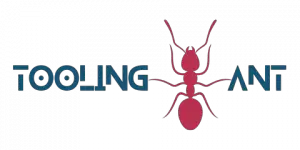The world of technology is constantly changing and evolving, with developers constantly looking for new and innovative ways to build applications.
Two technologies that have been gaining a lot of traction lately are Electron and React Native.
But what exactly are they, and does Slack use them? In this article, we’ll answer those questions and explore the advantages of using Electron and React Native for Slack, how to leverage Slack’s APIs with Electron, and the future of these two technologies.
Finally, we’ll look at some alternatives to Electron and React Native.
Let’s get started!.
Table of Contents
Short Answer
Slack does not use the Electron framework for their desktop app.
Instead, they use a combination of web technologies like JavaScript, HTML, and CSS, along with native technologies like Objective-C and Swift for the macOS version and Java for the Windows version.
This allows them to have more control over the features and performance of their app.
What is Electron?
Electron is an open-source framework for building cross-platform desktop applications.
It was created in 2013 by GitHub, and has since become one of the most popular frameworks for developing desktop applications.
It enables developers to build native desktop applications for Windows, Mac, and Linux using the same codebase.
It is based on the Chromium engine, allowing developers to leverage the same web technologies (HTML, CSS, and JavaScript) used to create web applications.
Electron also provides a wide range of APIs and Node.
js modules that allow developers to access OS-level features such as the file system, network stack, and more.
With Electron, developers can easily create multi-platform apps that run on all major desktop platforms.
What is React Native?
React Native is a open-source JavaScript framework created by Facebook for building mobile applications.
It allows developers to create applications for both iOS and Android from a single codebase, making it a popular choice among developers.
React Native is based on React, the popular JavaScript library, which makes it easy to build user interfaces.
Unlike Electron, React Native is optimized for mobile, giving users a faster and more intuitive experience.
It also provides access to native features such as geolocation, camera, and more.
Additionally, it allows for code reuse between different platforms, making it an ideal choice for companies like Slack who need to develop for multiple platforms.
Why Does Slack Use React Native?
When it comes to developing applications for the desktop and mobile platforms, there are a few options available.
One of the most popular options is Electron, an open source framework for building cross-platform desktop applications.
However, Slack has chosen to use React Native as its framework of choice.
So, why does Slack use React Native instead of Electron? The answer is quite simple: React Native offers a better experience for its users.
As a framework that is optimized for mobile, React Native offers faster performance and an intuitive user interface.
With the React Native framework, Slack is able to provide users with a more consistent experience across both desktop and mobile devices.
In addition, React Native allows developers to write code in one language and deploy it across multiple platforms.
This makes it easier for developers to create applications that look and feel the same on different platforms.
With Electron, developers must create separate versions of their applications for each platform, which can be time consuming and difficult to manage.
Finally, React Native makes it easy for developers to leverage Slacks APIs.
With React Native, developers can easily integrate Slacks functionality with their own applications, making it easier to create a rich user experience.
So, while Slack does not use Electron, it has still found a way to provide users with a better experience.
By leveraging React Native, Slack is able to create applications that are fast, consistent, and easy to use.
And, with the ability to integrate with Slacks APIs, developers can easily create powerful applications that leverage the full power of Slacks platform.
Advantages of React Native for Slack
When it comes to creating a mobile application, React Native is the ideal platform for Slack.
Not only does React Native offer better performance and an intuitive user interface, but it also has several distinct advantages.
First, React Native is optimized for mobile, meaning that Slack can take advantage of all the latest mobile technologies, such as high-resolution graphics, faster performance, and better battery life.
Additionally, React Native is highly extensible, making it easy to add new features and functionality to Slack’s mobile app.
Finally, React Native is open source, which means that Slack can take advantage of the latest bug fixes and updates without having to invest in a proprietary solution.
With all of these benefits, it’s easy to see why Slack chose to use React Native for their mobile app, instead of Electron.
How to Leverage Slack’s APIs with Electron
Leveraging Slack’s APIs with Electron is possible, although Slack does not actually use the framework.
There are a few ways one can use Electron to integrate with Slack, including developing an Electron-based desktop application that can interact with Slack’s APIs.
Electron applications are able to interact with Slack’s APIs through webhooks, which can be used to receive and send data from Slack to the application.
In addition, Electron applications can also be used to create custom bots that can handle commands sent from Slack.
To get started, developers will need to first set up the Electron framework.
This includes downloading the Electron application, then setting up the appropriate packages and libraries.
Once the framework is set up, developers will need to use the Slack API to access the appropriate data and functionality.
This can be done by using the Slack Web API or the Slack Events API, depending on the type of interaction needed.
Once the API access is set up, developers can begin using Electron to interact with Slack.
This can be done by using the webhooks functionality to receive and send data from Slack to the application, as well as to create custom bots that can respond to commands sent from Slack.
Electron can also be used to create custom notifications and messages, which can be sent from Slack.
Additionally, the Slack API can be used to create custom integrations with other applications and services.
Overall, leveraging Slack’s APIs with Electron is possible, although Slack does not actually use the framework.
By setting up the Electron framework and accessing the appropriate Slack API, developers can create custom applications and bots that can interact with Slack in a variety of ways.
This can be used to create custom notifications and messages, as well as to create custom integrations with other applications and services.
The Future of React Native & Electron
The combination of React Native and Electron has the potential to revolutionize how we develop applications, allowing developers to create powerful applications that are optimized for both desktop and mobile platforms.
By leveraging the power of React Native, developers can build applications with a more intuitive user interface and faster performance.
And, by taking advantage of Electron, developers can create applications that have access to Slack’s powerful API and platform.
The combination of React Native and Electron is an exciting development for the future of application development.
It offers developers the opportunity to create powerful applications that are optimized for both desktop and mobile platforms, giving users the best possible experience.
As more developers begin to take advantage of this combination, we will see more applications being built that leverage the power of both React Native and Electron, giving users a more seamless experience across all of their devices.
Other Alternatives to Electron & React Native
Although Slack does not use Electron, there are a number of other popular frameworks and technologies out there that can be used to build cross-platform desktop applications.
For instance, Adobe AIR is a platform that allows developers to create and deploy applications across multiple operating systems.
Similarly, Microsofts Silverlight provides a platform for building rich internet applications.
Additionally, Python and Ruby are both popular programming languages that are often used for desktop application development.
Python is especially popular for developing applications in a variety of fields, such as machine learning and data science.
Ruby, on the other hand, is more commonly used for web development and has a large library of available tools.
Finally, Node.
js is another popular framework for building cross-platform applications.
Node.
js is based on the JavaScript programming language and is used to create interactive applications that can be deployed on multiple platforms.
Node.
js is often used in combination with other popular frameworks such as React, Angular, and Vue.
js.
Final Thoughts
It is clear that React Native is the best choice for Slack, as it provides a better user experience with faster performance and an intuitive interface.
While Slack doesn’t use Electron, developers can still leverage Slack’s APIs with Electron to build desktop applications.
It’s safe to say that both Electron and React Native will continue to be a great choice for developing applications, and the best choice will depend on the user’s specific needs.
Whether you decide to use Electron, React Native, or another alternative, there are plenty of options to make your project successful.

